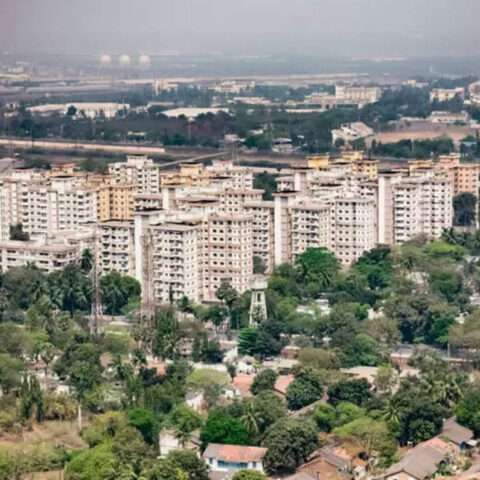Writer-director Hallie Meyers-Shyer knew she had to find the capital-P perfect house in which to set her movie, Goodrich. Consider: This is a touching dramedy (in theaters October 18) in which a set-in-his-ways art gallery owner Andy Goodrich—played by Michael Keaton—wakes up to the startling news that his wife has left him and he must domesticate with his twin kids. “Homes reflect the people who live in them,” Meyers-Shyer tells AD. In Goodrich’s case, he’s a man with “very curated taste” who, after his first marriage ended, thought he’d live alone in a midcentury-style home exuding masculine energy. “Then he meets a younger woman and she moves in and they have these kids. He moved the kids into his world, which was really important to us [to convey]. Goodrich was never going to move to a house with a white picket fence.”
Her mom, the legendary Nancy Meyers, usually relies on custom-built sets to convey the celebrated warm and inviting homes in her films, but Meyers-Shyer used the real deal. After a “far and wide” search throughout Los Angeles, she landed on a midcentury stunner in Baldwin Hills, designed by modernist architect Miller Yee Fong in the late 1960s. Fong’s Chinese-immigrant parents, Danny Ho and Muey Fong, moved in circa 1970, and as of press time, the unique residence is on the market. “It’s in pristine condition with these black-tile floors and wood ceilings and a rock garden and lots of glass with sweeping views of Los Angeles. It just felt so masculine. I knew it would shoot really well,” production designer Richard Bloom tells AD.
Though many of the house’s standout furnishings remain onscreen—including the elevated fireplace and red sofa in the living room—the production team spruced up its interiors. (“We had to be very delicate working in there!” he says.) For visual inspiration, Meyers-Shyer consulted a Pinterest board that she first created five years earlier. “I had a very specific look and did a storyboard before I even saw it,” she says of her vision. “I wanted to keep the color palettes of a mustard yellow and burnt reds and oranges and dark greens. You will not see a pastel!”







